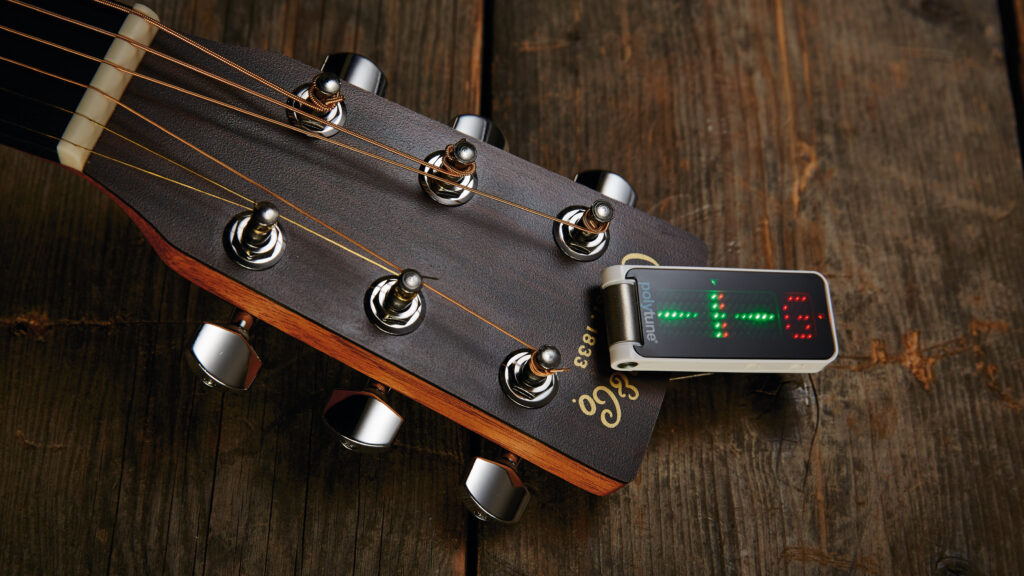How Do Professionals Tune Their Guitars?

What is the first thing you are advised about when you start learning the guitar? Fight the temptation to start playing immediately and ensure that you are in tune before anything else. It takes just a couple of moments; but it can do miracles for your instrument and your musicianship.
In this article, we take an in-depth look at how professionals tune their guitars so effortlessly. Since most choose to use Guitar Tuners for this, let’s dive in and find out why!
The Importance of Tuning
If you are just starting to play the guitar, an out of tune instrument can be inconceivably baffling and make each note sound like an error, even when it isn’t.
In the same way, it can make learning more difficult because you will not be able to recognise whether or not you are hitting the correct notes when your instrument is off-key.
Understanding how to tune a guitar properly will guarantee that whenever you play, your sound will accurately reflect your ability. Whether you need to figure out how to tune a guitar with or without a tuner, our guide will show you precisely how to tune a guitar using a few tried and tested methods so you can sound like a pro.
Standard Guitar Tuning
Most guitarists tune their instruments to ‘standard tuning’. If you are learning to play and don’t know which tuning to use, you are advised to stay with standard tuning for the time being.
As you become more familiar with your instrument, you can go ahead and try different tunings to accomplish various sonic styles with your guitar.
If you are using tabs to play the melody, these will generally let you know what tuning to go for. Over time, you will actually begin to train your ears to perceive the melody’s tuning for yourself.
Guitar String Tuning Notes – The Most Effective Method to Tune a Guitar
There are six strings on the guitar. These are numbered from one to six starting with the one at the top.
In ascending order, you will regularly name the strings, beginning with string six: E, A, D, G, B, E. Note that E is the highest as well as the lowest string, meaning it is the same note separated by two octaves.
These notes represent the pitch your string is supposed to sound when played open, or without any fingers pressed down on any of the frets. While you are tuning, it is ideal to begin with the 6th string and work down from there.
Step-By-Step Instructions to Tune a Guitar without a Tuner
Do you want to figure out how to tune a guitar without using a guitar tuner? In the event that you end up playing solo and without a tuner, you can make your guitar sound good and as though it is in tune by tuning the guitar to itself.
To begin, you must hold down the 5th fret on the 6th string (E string); this makes it sound like you are playing the A string, which is the next one down, giving you the note you need to tune the next string
Play the 5th string open (A string) and match it to the pitch you made with the 5th fret of the E string. When the two sound the same, you will have correctly tuned it.
Now continue to do this for each string, matching the pitch of the 5th fret on the string above it. There is one exception to this, and that is 2nd string (B string), which tunes to the 4th fret of the previous string (G string) rather than the 5th.
If each string is done correctly in this way, your guitar should sound just fine by itself.
Conclusion
Now that you know how to tune a guitar like a pro, you should be well on your way to achieving your musical dreams with this amazing instrument.
Remember, in order to master this skill, you will need to constantly practice and learn from mistakes.




